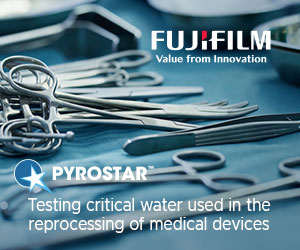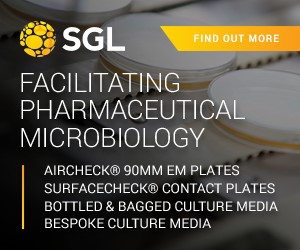3M™ Petrifilm™ S...
Micronic Marks Pearl...
20th May 2014 Content supplied by: Nofima
Nofima Start Work at Pathogen Pilot Plant
“The food pilot plant at Campus Ås can save lives,” states the Norwegian Minister of Agriculture and Food Sylvi Listhaug, and adds that it forms a basis for international collaboration, and a closer collaboration between the marine and the agricultural sectors.
Together with Minister of Fisheries Elisabeth Aspaker, Sylvi Listhaug opened the new pathogen pilot plant research facility, which will contribute to increased knowledge about dangerous food-borne bacteria such as Listeria monocytogenes and pathogenic E. coli. Scientists can study these life-threatening bacteria in a realistic production environment in a Biosafety level 3 facility in order to gain knowledge about how to prevent their growth and survival in food. It will be possible for the scientists to produce and package various types of food deliberately contaminated with pathogenic bacteria in order to investigate the fate of such bacteria under different production conditions - , and – not least – develop methods that ensure safe food. One important task for the scientists will be to increase our knowledge of the ability of bacteria to adapt to different recipes and processes in food production. The pathogen pilot plant will also be used for testing of novel and conventional cleaning and disinfection methods of equipment and production environment.
World-class research The ministers Listhaug and Aspaker both emphasised how Campus Ås is establishing itself as an academic centre of excellence in food research and food safety.
“It started with an idea about 15 years ago. We realised that there was a great need in both the industrial world and in the sphere of research and education to establish a facility in which disease-producing bacteria could be studied during the production of food”, says Helga Næs, research director for Food Quality and Safety at the food research institute Nofima.
The pathogen laboratory at Nofima was rebuilt in 2005 and upgraded to a “minifactory” for the production of dry fermented sausages. Following an outbreak of enterohemorrhagic E. coli in a type of sausage known as “morrpølse” in 2006, a research project was started in the minifactory. Its purpose was to study the effects of changes to the recipe and processing steps in order to reduce the risk of dangerous E. coli in dry fermented sausage. The scientists discovered, among other things, that a gentle heat treatment of the sausages (at 43 °C) for 24 hours increased food safety. The need for a facitilty to produce many different kinds of risk products in an industrial manner was strengthen at this time.
Nofima is hosting the new production hall, which has been specially designed with respect to air pressure and decontamination, , waste water treatment and the destruction of other waste in order to prevent the spread of infectious material to the surroundings.
The initiative shows that Norwegian authorities take food safety seriously. It reinforces Campus Ås in its work to become a leading international centre for research, innovation and education in the field of food. The process hall is the most recent addition to the new and upgraded pilot facilities in the sectors of vegetables, grain, meat, dairy and seafoods. Scientific investigation, education and commerce all meet in these research halls. Prototypes of new foods are developed here, together with knowledge in food technology and how to produce safe food with the highest possible nutritional value.
High costs for food-borne diseases The most recent figures from the EU show that 5,648 outbreaks of food-borne diseases were recorded in 2011. Nearly 70,000 people fell ill, over 7,000 required hospital treatment, and 93 died as a result of food poisoning. The figures from the US are much higher: research figures from 2012 show that as many as 48 million people in America fell ill every year from a total of 31 identified disease-producing bacteria in food. In addition to the human suffering, the extra costs each year for sick leave have been calculated at just over USD 77 billion.
In 2012, the Norwegian Institute of Public Health received reports of 430 cases in which people had fallen ill as a result of bacteria in food. The Institute believes, however, that the correct figure for how many people in Norway falling ill every year as a consequence of microbes in food is much higher, since many cases are not reported. A greater degree of globalisation means that foods, both in the form of raw materials and as prepared products, cross national borders to a higher degree. Decision-makers, scientists and the food industry must, for this reason, continue to collaborate to ensure that consumers receive safe food.
The Pathogen Pilot Plant provides possibilities for the food industry with research based knowledge to ensure safe food to the consumers.
Facts about the pathogen pilot plant The pathogen pilot plant is a national facility, mainly financed by the Research Council of Norway. However The Ministry of agriculture and food and the Foundation for Research Levy on Agricultural Products have made significant contributions as well.
The pathogen pilot plant is part of the Pilot Plant Facilities for Food processing at Campus Ås, and in collaboration between Nofima and The Norwegian University of Life Science (NMBU) The Pilot Plant Facilities for Food processing also includes processing facilities for packaging, meat, fish, cereals, vegetables, dairy and by-products.
Date Published: 20th May 2014
Source article link: View
Related news
3M™ Petrifilm™ Salmonella Express System
Micronic Marks Pearl Milestone






